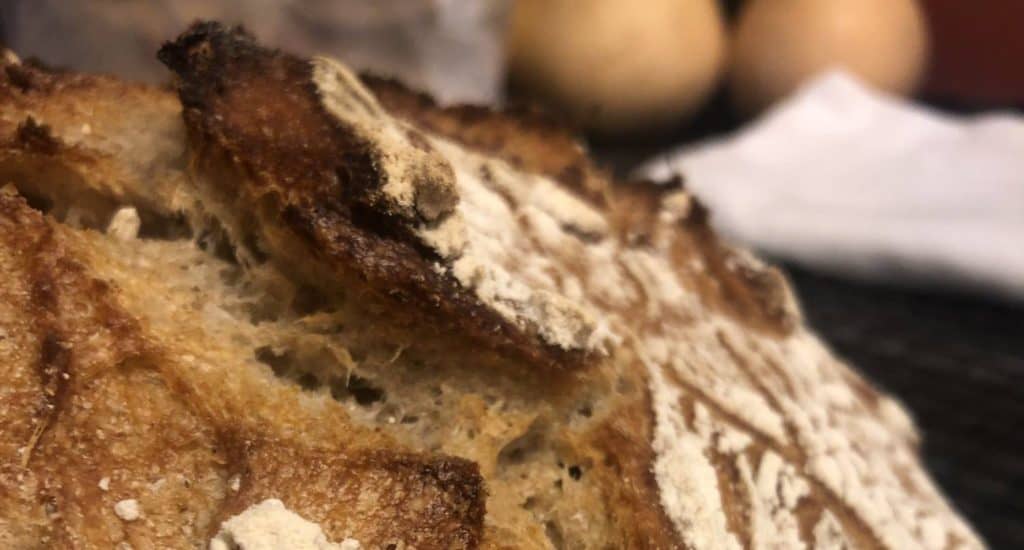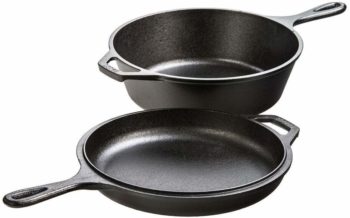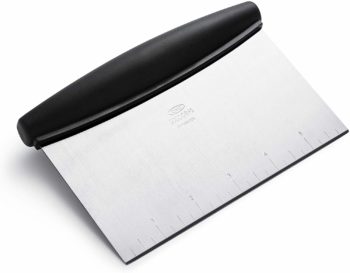Making bread with sourdough is one of the most fun and rewarding of all the things you can bake. While not complex, sourdough is an extended process where a lot of things can go wrong, so you might as well have the right tools to help you get the job done.
Here are the tools I recommend and use…
Why Sourdough?
Sourdough is a natural process and a wonderful “slow food.” I find the baking to be enjoyable and I genuinely believe that sourdough bread is better for me and my family than commercially produced quick-rise breads. I can’t really say that I have any scientific rationale for this belief, but I’ve enough bread to know that I feel better after eating a nice, homemade sourdough than I do after eating just about any other bread.
Also, I have to admit, I absolutely am addicted to the sour taste of this bread!
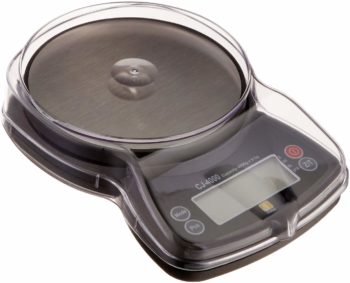
Food Scale
Baking is science, and it’s a particularly exact science. Maybe the pros can eyeball a measurement, but I certainly can’t so I rely on a trusty scale for every measurement. I even measure my liquids in grams so I make sure I’m as exact as I can be.
My favorite food scale is actually an excellent coffee scale as well, it’s the Jennings CJ-4000. I like this scale so much because it’s reliable (I’ve had mine over 6 years), affordable, versatile, and compact.
Importantly for baking, this scale has a high maximum weight, so I can put a big glass mixing bowl on it and then still add my flour, liquids, and whatever else I need. the 4000 gram maximum weight (about 9 pounds) is more than enough.
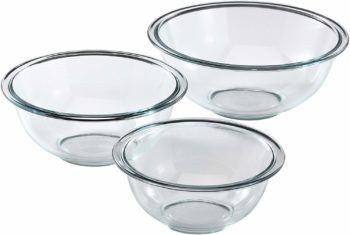
Mixing Bowls
I like to do all my mixing by hand and in heavy glass bowls. This means they need to be fairly large and tough. You want a good-sized bowl for the biggest size — at least two quarts. A 3-piece set like this one from Pyrex gets the job done quite nicely.
Duralex has quite a nice set of glass mixing bowls as well, which I really like. The set is a bit more expensive but it’s large and super versatile. I have almost all Duralex glassware in the kitchen, so it’s a nice fit as well.
The mixing bowl is used in sourdough for mixing, but frequently used for storage as well. This means you want something heavy enough to maintain steady temperatures and protect the bowl from both the fridge and being around a 500-degree oven.
Towels
I go through so many towels in the kitchen, so I have to have ones I like nearby. They have to be non-fuzzy and have a little bit of texture to them. I always use flour sack towels. I did a long article about my reasoning, so I’ll let you refer to that if you want to know more!
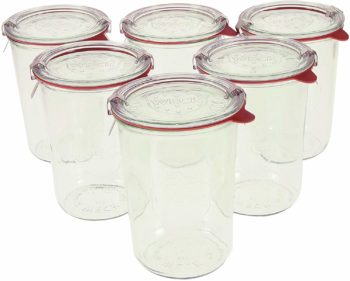
Sourdough Starter Storage
Sourdough needs to live somewhere, you know, because it’s actually living. I like to keep mine in the fridge, but it has to stay out before it’s being used in order to be fed and to get warm enough to become active. Weck glass jars are the way to go.
You can simply keep your sourdough starter in mason jars — and I did for a long time — but the goopy starter inevitably gets on the jar threads and things start to get messy. Or the starter starts to dry near the top of the jar and it looks gross. Or you seal the lid to tight and there is no way for air to escape.
I don’t love the little metal springs, but these jars are easy to clean and the right size for me.
Cast Iron For Baking
So this is the single biggest decision in your sourdough hardware purchase: do you go enamel or not? It’s not a small decions.
Personally I use a large Le Creuset cast iron enamel pot for my bread baking. I’ve done this method for years, and I’ve even replaced the black plastic Le Creuset knob, which has a 450-degreee F temperature rating, with a metal one. I used a 6.75 quart Le Creuset dutch oven, which has been my cooking companion for years and years. My Le Creuset has chipped in the past, so I’m more careful with it than I used to be, but this is still a great item for sourdough baking.
Le Creuset also makes the Round Wide Dutch Oven with Baker Lid, which has a better lid for baking but it’s heavier than mine and more expensive. Its also smaller, so while it’s technically a better fit, it doesn’t seem as appealing to me.
Despite my appreciation for Le Creuset and their lifetime warranty, more and more people recommend the Lodge 3 Quart Cast Iron Combo Cooker. This is an indestructible cast iron combo that sells for about $30. If I was going to start over or buy new baking gear, this is what I’d buy because it is so simple and so low maintenance.
Dough Scraper
I find a good, heavy dough scraper to be fun and deeply satifsying to use. It’s also handy for moving the wet, sticky dough around and then cleaning the cutting board when it’s covered in dried dough and start.
I’ve found that dough scrapers fall into two categories: flexible plastic ones and heavy metal ones. The plastic ones are good for getting into bowls and doing things that you’d normally use your hands for. I just tend to use my hands or a spatula for this sort of thing. I prefer a stiff metal scraper, like OXO’s.
Big Cutting Board
Lots of people like use to use their countertop for kneading and shaping dough, but I’m not a fan of that. Countertops are used so often for all sorts of things that no matter how much I clean it, I feel like having an additional surface on top of it when preparing food makes sense.
Personally I like large cutting boards, especially those from Epicurean. I typically use the large Gourmet that’s available to me or I use a Big Block. The latter was a splurge and it’s so heavy that it’s impractical, but I still sort of love it.
Epicurean makes large, professional-grade, dishwasher safe cutting boards out of a sort of pressed wood. I like that their cutting boards aren’t plastic and they last, plus they are satisfying to cut on.
Things You Can Skip
Let’s face it, we are trying to be proficient bakers, not professional ones. I’m not going to buy every specialty tool just because they are technically what the pros use or the “right” thing to use. Here things that you can get by perfectly well without…
- Lame – This is a razor blade on a wooden handle. It does its job well, but a very sharp knife is fine
- Banneton – This is a bowl used for proofing dough. It can breathe better than a normal bowl and gives the bread little ridges. You can just use your glass mixing bowl
- Flour Sifter
- Thermometer
- Baking Steel or Pizza Stone – These are used for temperature consistency but I’ve found that the heavy cast iron pot is stable enough

